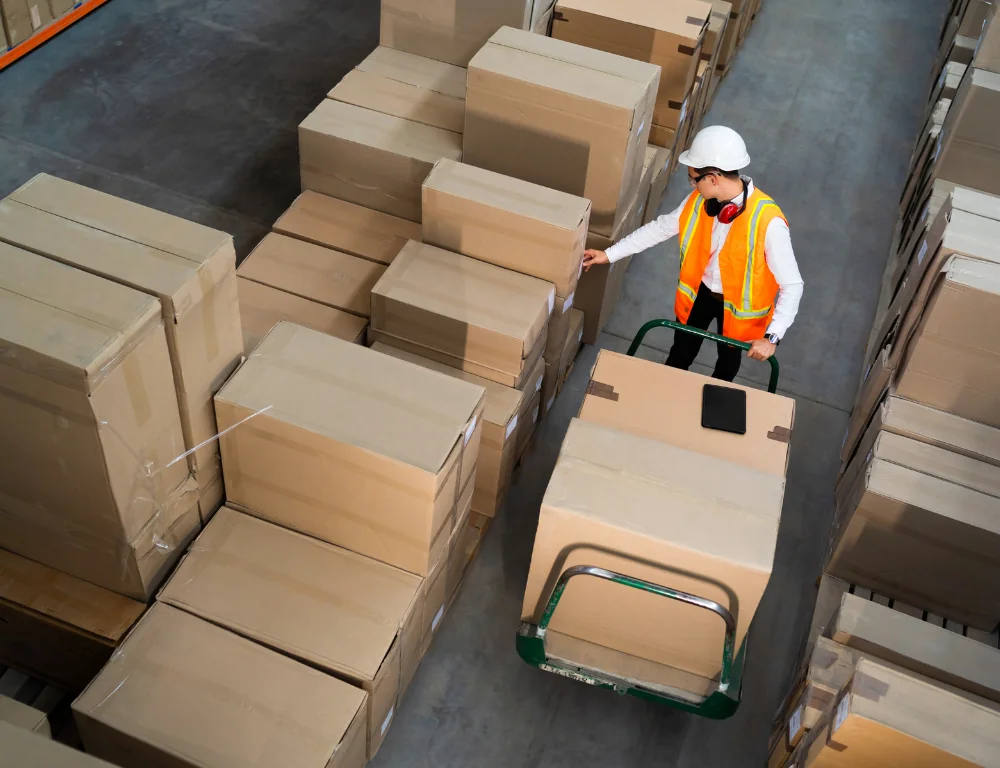
Easy Guide to Freight Class
Get your Easy Guide to Freight Class below where we further elaborate on how to determine the right class for your shipment.
Need an easy guide to understanding freight class?
Which do you think would be more expensive to ship, 50 pounds of feathers or 50 pounds of bricks? Think about it in terms of weight and freight density. If you guessed 50 pounds of feathers, you are correct. Why? Feathers are much lighter than bricks, but 50 pounds of feathers take up much space in the trailer. Our Easy Guide to Freight Class teaches you how to determine the right class for your shipment.
The NMFC® standard compares commodities moving in interstate, intrastate, and foreign commerce. It’s similar to other groupings or grading systems that many other industries use. Our guide takes the boring NMFC standards and makes them easier to understand.
I need even more guidance. Check out our entire collection of freight shipping guides.
Awards and Endorsements
- 2021, 2017 & 2016 Food Logistics’ Top Green Providers
- 2021 & 2018 Supply & Demand Chain Executives’ Pros to Know: Matthew Brosious
- 2020 & 2019 Top Food Logistics’ 3PL & Cold Storage Provider Award
- 2020 & 2019 Business Observer’s Top 500 Companies on the Gulf Coast
- 2020 & 2019 Business Observer’s Top 500 Companies on the Gulf Coast
- 2020 & 2017 Food Logistics’ Champions: Rock Stars of the Supply Chain
- 2020 Best of Palm Harbor Awards for Local Businesses
- 2017 Green Supply Chain Award from Supply & Demand Chain Executive
- 2017 Tampa Bay Business Journal Heroes at Work
- 2016, 2015, & 2012 Food Logistics Top 100 Software and Technology Providers
- 2013 Tampa Bay Business 100 by Tampa Bay Business Journal
- 2013 Top 100 Great Supply Chain Partners by SupplyChainBrain
- 2012 TIA Samaritan Award Honorable Mention
- 2012, 2011 & 2010 TBBJ Fast 50 Recipient

To create value for our customers by delivering customized shipping solutions that meet their unique needs and to fulfill shipping demands from simple to complex with expertise, guidance and ingenuity.
Rail shipping is a cost-effective and environmentally friendly transportation method that utilizes trains to move goods over long distances. It's known for its efficiency in handling large volumes of cargo, making it a sustainable and economical choice for businesses seeking reliable freight transport options.
Expedited shipping is a premium service designed to meet urgent delivery needs. It prioritizes speed and quick turnaround, ensuring that packages or goods reach their destination faster than standard shipping options. Expedited shipping is the go-to choice when time-sensitive deliveries are essential, providing businesses and individuals with reliable and prompt service for critical shipments.
White glove shipping is a premium service that goes beyond standard delivery, offering meticulous handling, specialized packaging, and in-home setup or installation for valuable or delicate items, ensuring a seamless and hassle-free experience for customers.
Less than truckload (LTL) shipping is a smart logistics solution for businesses with smaller shipments. It combines multiple smaller shipments into a single truckload, optimizing space and reducing costs. LTL shipping offers affordability and efficiency while ensuring timely delivery, making it an ideal choice for companies looking to save on transportation expenses without compromising on service quality.
We provide competitive freight shipping prices and an all-inclusive, easy-to-use shipping experience for our customers. Exceeding our customers’ expectations results in thousands of satisfied customer reviews and repeat business. We believe in the power of our customer relationships. Check out FreightCenter reviews from real customers, and learn what they have to say about their freight shipping experience!
Freight Class FAQs
Q. How does freight class affect packaging requirements?
A. Freight class plays a significant role in determining packaging requirements for shipments. Higher freight classes, which indicate higher density or greater difficulty in handling, often require stronger and more secure packaging to withstand the rigors of transportation. Proper packaging helps ensure the shipment arrives intact and undamaged, reducing the risk of costly freight claims.
Q. What packaging materials are suitable for different freight classes?
A. Packaging materials vary depending on the freight class and the nature of the items being shipped. For lower freight classes (e.g., Class 50-100), standard cardboard boxes and basic cushioning materials like bubble wrap or packing peanuts may suffice. However, for higher freight classes (e.g., Class 200-400), heavier-duty packaging materials such as double-walled corrugated boxes, wooden crates, or pallets may be necessary to provide adequate protection and support.
Q. How does improper packaging affect freight class determination?
A. Improper packaging can result in the reclassification of freight to a higher freight class. If a shipment is inadequately packaged and deemed more susceptible to damage during transit, carriers may reclassify it to a higher freight class to reflect the increased risk. This can lead to higher shipping costs for the shipper. Therefore, following proper packaging guidelines is essential to avoid unexpected reclassification and associated expenses.
Q. Are there specific packaging guidelines for hazardous materials in different freight classes?
A. There are specific packaging guidelines for hazardous materials based on their respective freight classes. Hazardous materials must be packaged according to strict regulations outlined by governing authorities such as the Department of Transportation (DOT) and the Occupational Safety and Health Administration (OSHA). Packaging requirements may include using specialized containers, cushioning materials, and hazard labeling to ensure safe handling and transportation. It’s crucial for shippers to adhere to these guidelines to prevent accidents and ensure compliance with regulatory requirements.


